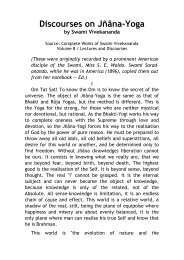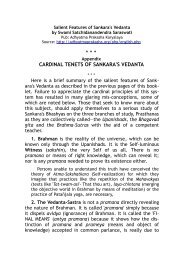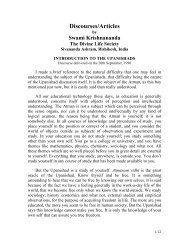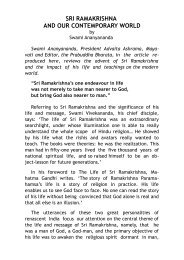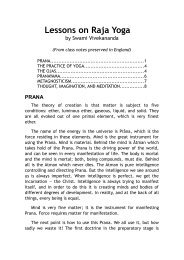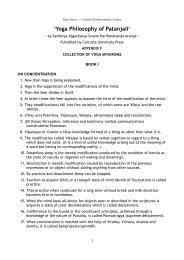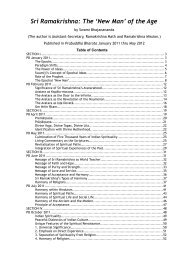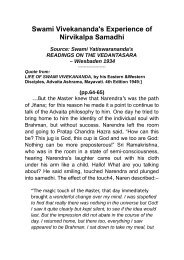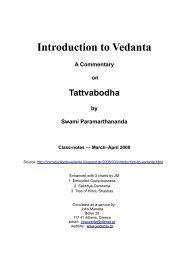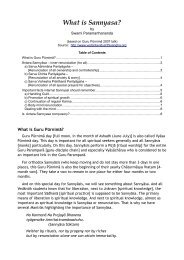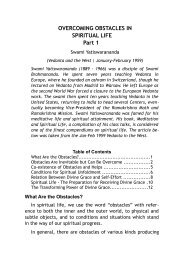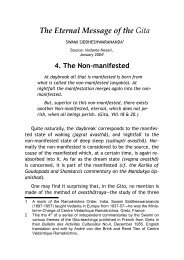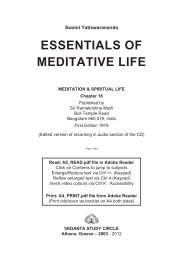Concentration & Meditation - Vedanta
Concentration & Meditation - Vedanta
Concentration & Meditation - Vedanta
Create successful ePaper yourself
Turn your PDF publications into a flip-book with our unique Google optimized e-Paper software.
<strong>Concentration</strong> and <strong>Meditation</strong> 15the soul and the Image in the present is internalised and intensified,it becomes meditation.True meditation is thus an act which works against the verytendency of the mind to dwell in the past. <strong>Meditation</strong> is the movementof a steady stream of consciousness from the “I” (the subject)to a mental image (the object). When this movement issteady, the object does not change; when it wavers, the objecttoo changes. It is an impulse or movement that originates in theself that determines whether the image remains steady or changing.This self-impulse is the will. When we try to meditate, a numberof memories crowd into the mind and we feel helpless. But itis we who allow the mind to wander in this way. We can fix themind on any object if we really want to. By training the will we cankeep the inner image steady. When this happens our memorygets restricted to the present. And that is meditation.<strong>Meditation</strong> always means meditation on an object. There is apopular notion that meditation means making the mind blank bypurging it of all images. This is not quite true, for there must alwaysbe an object in the mind during meditation. <strong>Meditation</strong>, asalready pointed out, means the maintenance of a single thoughtand the suppression of all the others.The complete suppression of all thoughts takes place in deepsleep and some higher forms of absorption (samadhi) when themind becomes free from all objects, and the objectifying tendencyof the mind itself is suppressed.If a person tries to remove all thoughts without acquiring purityand spiritual power, the usual results will be not samadhi buta kind of sleep or hypnotic stupor. “When persons without trainingand preparation try to make their minds vacant,” warnsSwami Vivekananda, “they are likely to succeed only in coveringthemselves with tamas, the material of ignorance, which makesthe mind dull and stupid, and leads them to think that they aremaking a vacuum of the mind.” 3 It should be pointed out herethat the word “meditation” is often used, especially in the teachingsof Swami Vivekananda, to mean not only dhyana but alsothe next higher state of samadhi or absorption. This does not,3. Complete Works of Swami Vivekananda (Calcutta: Advaita Ashrama, 1977) I:212.



